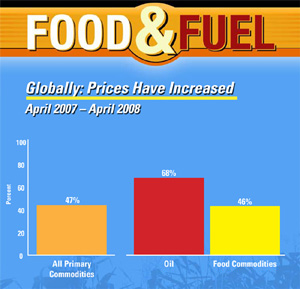 …sweet-smelling that is. Graham Rahal, driver of the No. 06 Newman/Haas/Lanigan Dallara was one of three IndyCar drivers at the Crystal Flash pump promotion in Carmel, IN this afternoon. The Ethanol Promotion and Information Council and the Indiana Corn Marketing Council sponsored the event.
…sweet-smelling that is. Graham Rahal, driver of the No. 06 Newman/Haas/Lanigan Dallara was one of three IndyCar drivers at the Crystal Flash pump promotion in Carmel, IN this afternoon. The Ethanol Promotion and Information Council and the Indiana Corn Marketing Council sponsored the event.
This is Graham’s first season racing with an engine that runs on 100 percent ethanol fuel. The switch to an ethanol-fueled car also proved to be rather sweet for the 19-year-old Indy competitor. Graham won his first ever Indy race in St. Petersburg, becoming the youngest driver to win a major motorsports victory. Graham snagged the 13th pole position for his biggest race to date, the Indy 500.
I managed to snag some face time with Graham in between radio spots and autograph requests during today’s pump promotion. You can listen to Graham talk about his experience with driving on ethanol here: [audio:http://www.zimmcomm.biz/epic/rahal-graham-pump.mp3]


 Team Ethanol Driver Ryan Hunter-Reay says pump promotions help emphasize what ethanol is all about: giving consumers a break at the pump as fuel prices continue to spike. Ryan drives the No. 17
Team Ethanol Driver Ryan Hunter-Reay says pump promotions help emphasize what ethanol is all about: giving consumers a break at the pump as fuel prices continue to spike. Ryan drives the No. 17  It was a record-breaking event for the
It was a record-breaking event for the  The author of “
The author of “ In his book, Dr. Robert Zubrin shows how we could be using fuel dollars that are now being sent to countries with ties to terrorism to help farmers here and abroad. As the FEW keynote speaker, Zubrin will offer his vision of how switching to alcohol fuels could help safeguard homeland security and provide solutions for global warming and Third World development.
In his book, Dr. Robert Zubrin shows how we could be using fuel dollars that are now being sent to countries with ties to terrorism to help farmers here and abroad. As the FEW keynote speaker, Zubrin will offer his vision of how switching to alcohol fuels could help safeguard homeland security and provide solutions for global warming and Third World development. This week is the biggest week of the year for Hoosiers in Indianapolis with the 92nd Indy 500 coming up and since it is also the second year that the race will be running on 100 percent fuel grade ethanol, it’s a big week for the corn and ethanol industries in the state.
This week is the biggest week of the year for Hoosiers in Indianapolis with the 92nd Indy 500 coming up and since it is also the second year that the race will be running on 100 percent fuel grade ethanol, it’s a big week for the corn and ethanol industries in the state. Indiana’s
Indiana’s  A report out from accounting firm KPMG says that 60 percent of executives believe that consolidation in the renewable energy sector will continue. That’s leading to fears that a bubble may be developing in the solar, wind, and biofuel sectors as bidders compete for assets and send prices sharply higher.
A report out from accounting firm KPMG says that 60 percent of executives believe that consolidation in the renewable energy sector will continue. That’s leading to fears that a bubble may be developing in the solar, wind, and biofuel sectors as bidders compete for assets and send prices sharply higher. The National Biodiesel Board has recognized a group of U.S. Department of Agriculture researchers for finding new uses for natural glycerine, a by-product of biodiesel production, replacing glycerine made from non-renewable petroleum.
The National Biodiesel Board has recognized a group of U.S. Department of Agriculture researchers for finding new uses for natural glycerine, a by-product of biodiesel production, replacing glycerine made from non-renewable petroleum. During a Monday press conference, Secretary Ed Schafer said he had talked to the people who have “initiated these underground things that have been going on” to influence public opinion about ethanol incentives and found that while they understand that higher energy and transportation costs are the driving factor for increased food prices, they think “it’s easier” to target corn and ethanol.
During a Monday press conference, Secretary Ed Schafer said he had talked to the people who have “initiated these underground things that have been going on” to influence public opinion about ethanol incentives and found that while they understand that higher energy and transportation costs are the driving factor for increased food prices, they think “it’s easier” to target corn and ethanol.  I’m taking off for Indianapolis in about an hour. This year, I’ll be handling the Indy 500 on my own. The race isn’t until Sunday, but the
I’m taking off for Indianapolis in about an hour. This year, I’ll be handling the Indy 500 on my own. The race isn’t until Sunday, but the  On Thursday, EPIC will host the Ethanol Summit and Panel Discussion. Guest speakers include Joie Chitwood of the Indianapolis Motorspeedway, Andy Miller, director the the State Department of Agriculture, Eermson Fittipidi, a two-time Indy 500 winner, Brazilian ethanol producer and driver of this year’s felx-fuel Corvette Z06 pace car, Bill Becker, president and CEO of LifeLine Foods – the provider of the E100 racing fuel for the IndyCar Series – and more.
On Thursday, EPIC will host the Ethanol Summit and Panel Discussion. Guest speakers include Joie Chitwood of the Indianapolis Motorspeedway, Andy Miller, director the the State Department of Agriculture, Eermson Fittipidi, a two-time Indy 500 winner, Brazilian ethanol producer and driver of this year’s felx-fuel Corvette Z06 pace car, Bill Becker, president and CEO of LifeLine Foods – the provider of the E100 racing fuel for the IndyCar Series – and more. “We think the time has come for USDA to join in the public conversation about the relationship between food prices and biofuels,” said Agriculture Secretary Ed Schafer. “We want to offer our perspective and what has happened in the marketplace, to share our data and the analysis of what has happened.”
“We think the time has come for USDA to join in the public conversation about the relationship between food prices and biofuels,” said Agriculture Secretary Ed Schafer. “We want to offer our perspective and what has happened in the marketplace, to share our data and the analysis of what has happened.”